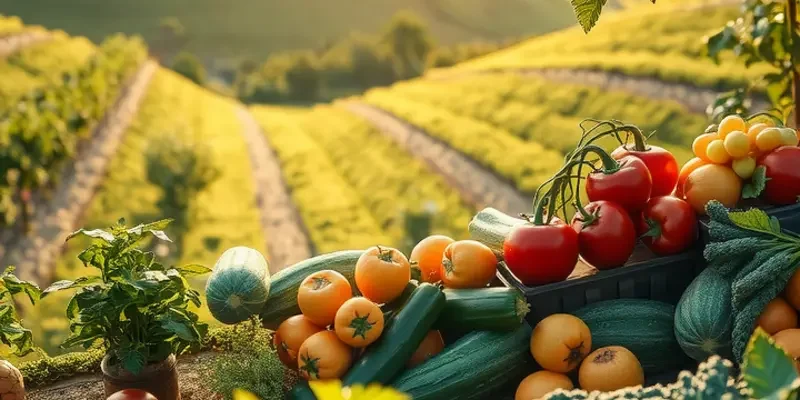Reusing glass containers is a practical and eco-friendly way to store food and minimize waste at home. With the right techniques, you can safely repurpose these durable vessels while keeping food fresh and organized. This guide walks you through essential tips and practices to get the most out of glass containers, ensuring your kitchen remains both efficient and environmentally conscious.
Choosing the Right Glass Containers for Food Storage

When it comes to selecting the ideal glass containers for food storage, several factors must be considered to maximize both functionality and sustainability. Glass containers vary in shape, size, and style, each offering distinct advantages for specific uses. Understanding these characteristics will aid in making informed choices for your kitchen.
Glass storage containers are predominantly made from soda-lime or borosilicate glass. Soda-lime glass is commonly used and often more affordable, but it is not as heat-resistant as borosilicate glass. If you frequently store hot foods or need containers for oven use, borosilicate may be the better option due to its higher thermal shock resistance.
One of the key features to scrutinize is the closure mechanism. Containers can have plastic, glass, or silicone lids, each impacting the container’s sealing efficiency. Airtight lids are essential for keeping food fresh and preventing spills. Silicone-sealed or rubber gasket lids offer superior sealing properties, essential for liquids or foods like soups and stews.
Pay attention to the container’s shape, as this will affect storage efficiency. Square and rectangular containers are easier to stack, maximizing space in your refrigerator or pantry. By contrast, round containers may be better for storing salads or items that require more uniform mixing.
Consider the size variety available. Buying a set with mixed sizes ensures you have the right container for different food quantities, which helps avoid wasteful situations, such as storing small portions in large containers that take up unnecessary space.
Reusable and multipurpose, glass containers with gradations or measurements on the sides provide an excellent feature for portion control and ingredient preparation, especially for those focused on dietary management. You can learn more about optimizing food choices here.
Safety in reuse is pivotal. Inspect containers before and after each use for chips or cracks, which could lead to breakage or contamination. Always follow the manufacturer’s instructions regarding dishwasher use, as not all glassware is dishwasher-safe, particularly lids with plastic components.
Some glass containers come with added features like venting lids for microwave use or sleeves that provide extra grip, reducing the risk of accidents. These features are especially helpful if you often transport food.
Caring for your glass containers extends their lifecycle. Avoid drastic temperature changes such as moving a container directly from the freezer to the oven, which could lead to thermal shock. Utilizing dry or warm hands when handling glass helps to maintain grip stability, reducing accidental drops.
In conclusion, thoughtfully choosing your glass containers involves evaluating their material, design, closure mechanism, and additional features. This careful selection ensures not only practical food storage but also supports a sustainable lifestyle by minimizing waste and maximizing reuse potential in your kitchen.
Best Practices for Storing Food in Glass Containers

Reusing glass containers for food storage not only helps minimize waste but also makes for a visually appealing and practical kitchen asset. Ensuring proper hygiene is paramount. Always start by sterilizing the glass containers before their first reuse. Wash them in hot, soapy water or run them through a dishwasher cycle, if they’re dishwasher-safe, to effectively remove any residual contaminants. To further prevent contamination, sterilize jars by placing them in a pot of boiling water for 10 minutes.
Once your containers are clean, focus on sealing them correctly to maintain food freshness. Glass containers come with a variety of lids, ranging from metal screw tops to silicone gaskets. Choose a closure that best matches the type of food you’re storing. For instance, airtight lids are preferable for items like grains, nuts, and spices, as they lock in aromas and keep out moisture.
Labeling is an often overlooked but crucial step in organizing food storage. Use non-permanent markers or reusable labels to note the contents and the storage date on each container. This helps you track how long items have been stored and minimizes food waste by reminding you of expiration dates. Additionally, consider using different colored labels for various categories like vegetables, grains, or leftovers to enhance organization.
Optimizing the placement of glass containers within your storage space can also extend the freshness of your food. Store items like grains and cereals in a dark, cool place to preserve their nutritional value. For refrigerated items, containers should be sealed tightly and stacked strategically to avoid overcrowding, as proper airflow is key to maintaining optimal temperature.
Mindful organization can reduce waste significantly. Keep older food items at the front of your pantry or refrigerator, so they are used first. Rotate stock regularly to ensure nothing goes unnoticed. Incorporating small practices like these not only maximizes freshness but also aligns with sustainable living efforts.
For further tips on refining your food storage techniques, you may find inspiration through mindful eating practices that reclaim food enjoyment. Understanding the psychological aspects of how we relate to food can enhance our storage and consumption habits—blending efficiency with mindfulness to foster a more sustainable lifestyle.
Final words
Reusing glass containers not only helps you manage your kitchen more effectively but also contributes positively to the environment by minimizing waste. With careful selection of containers and mindful storage practices, you can ensure your food stays fresh longer while reducing your reliance on single-use plastics. Embrace the art of repurposing and make your kitchen a haven for sustainability and efficiency.







